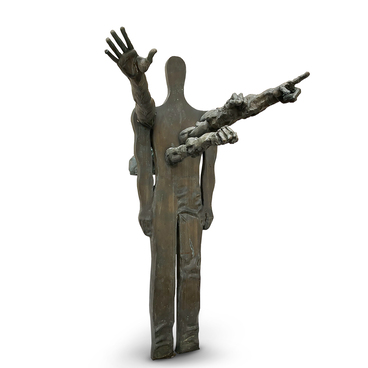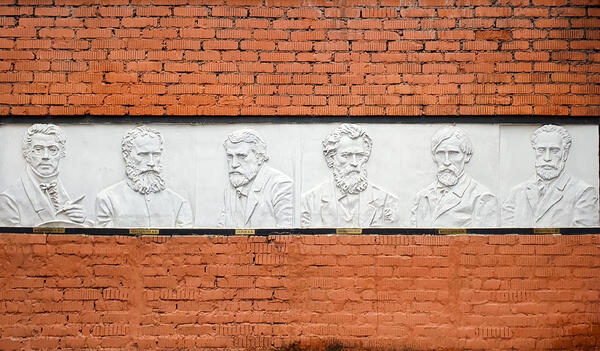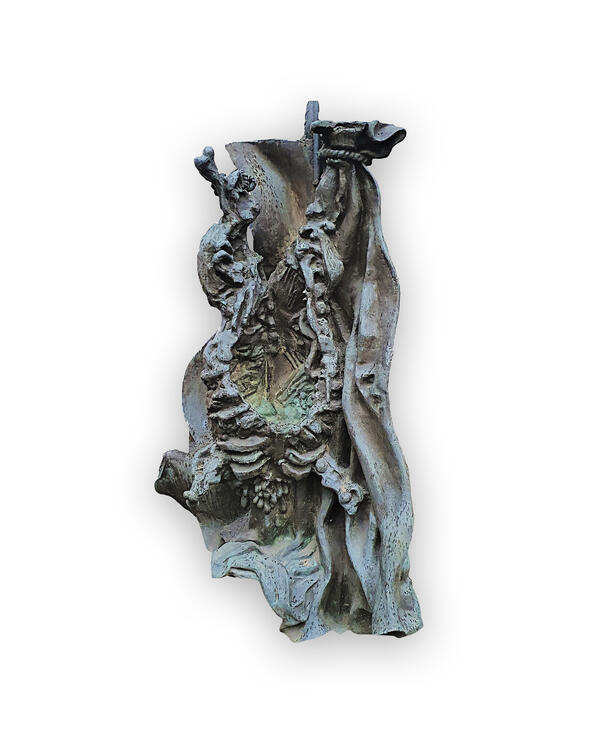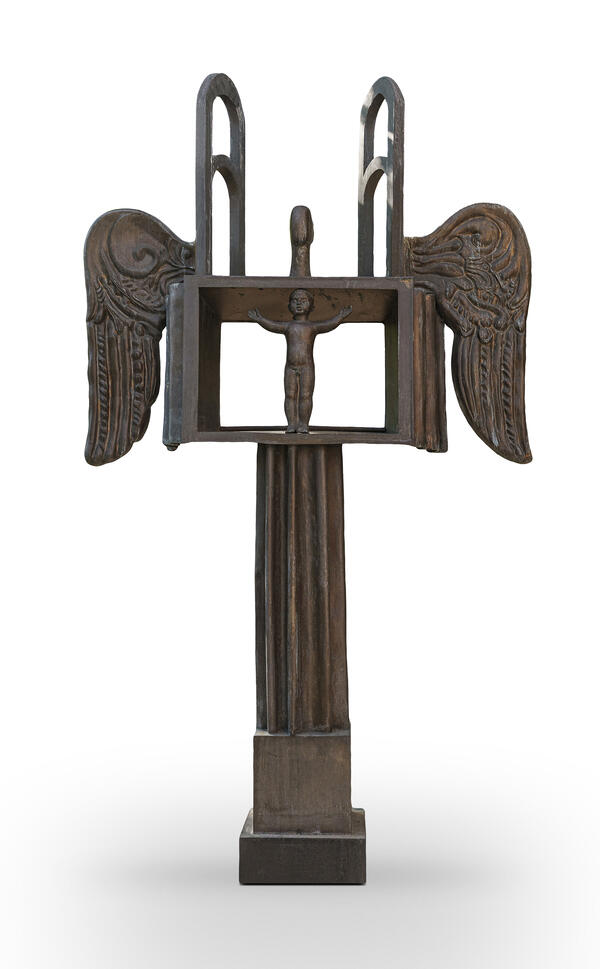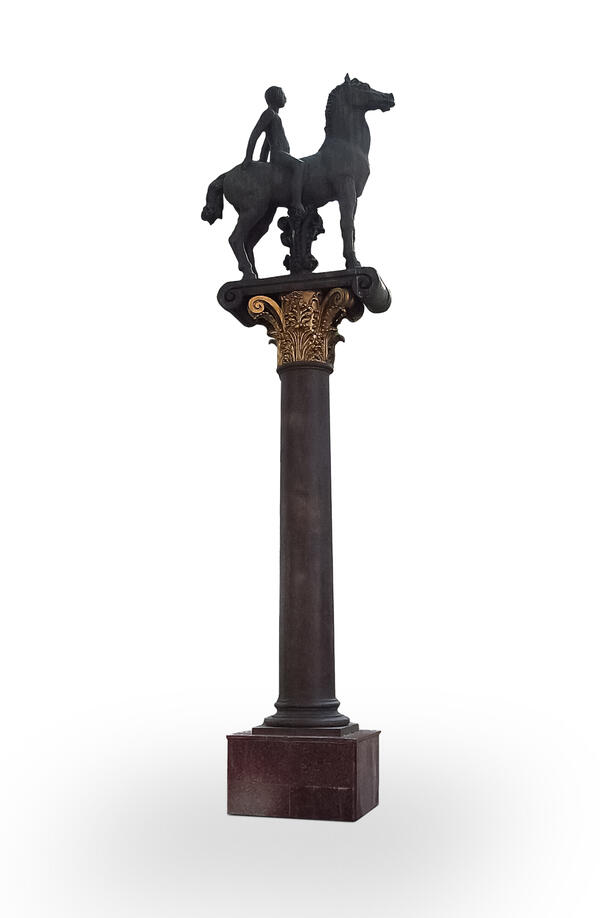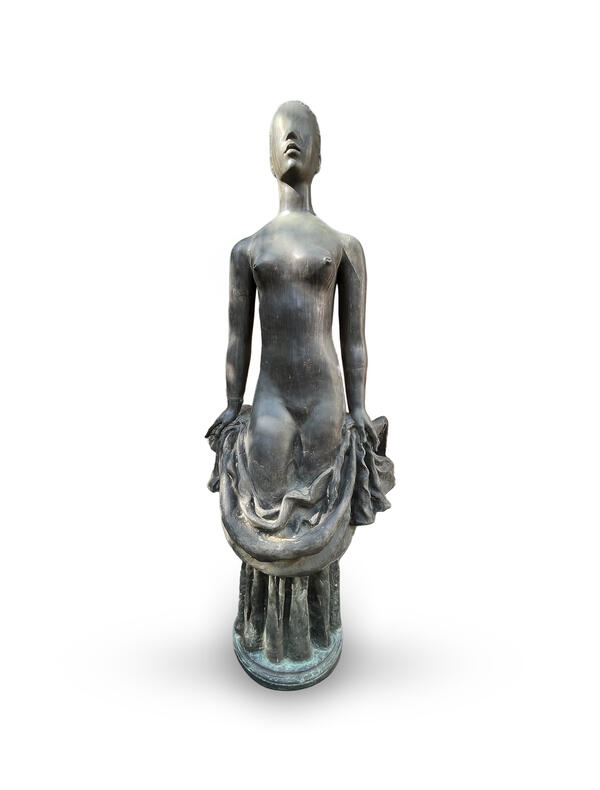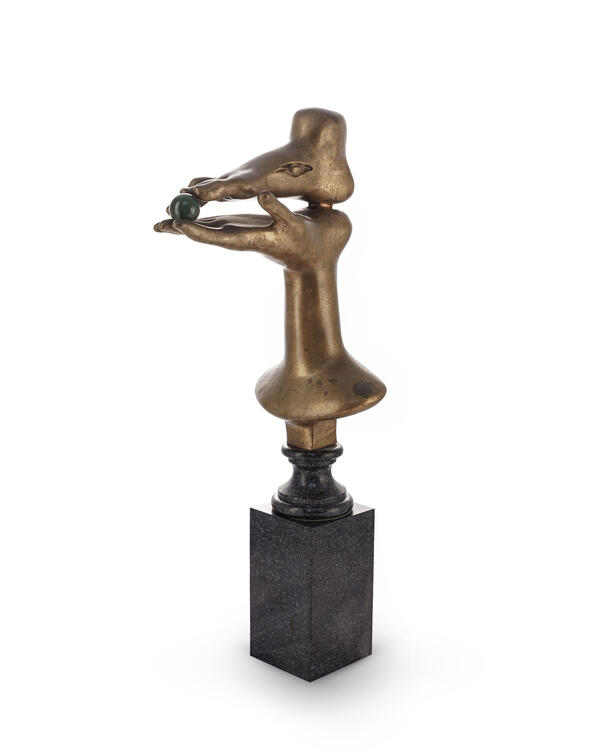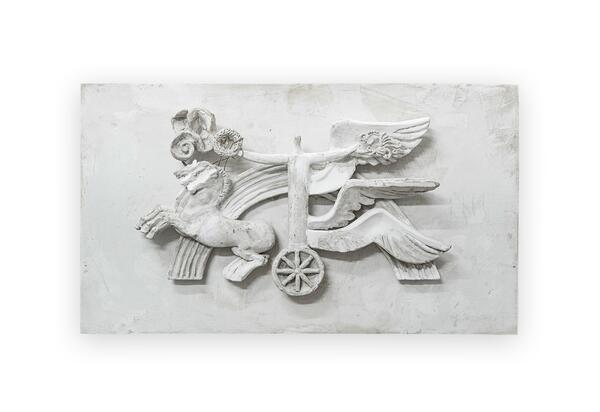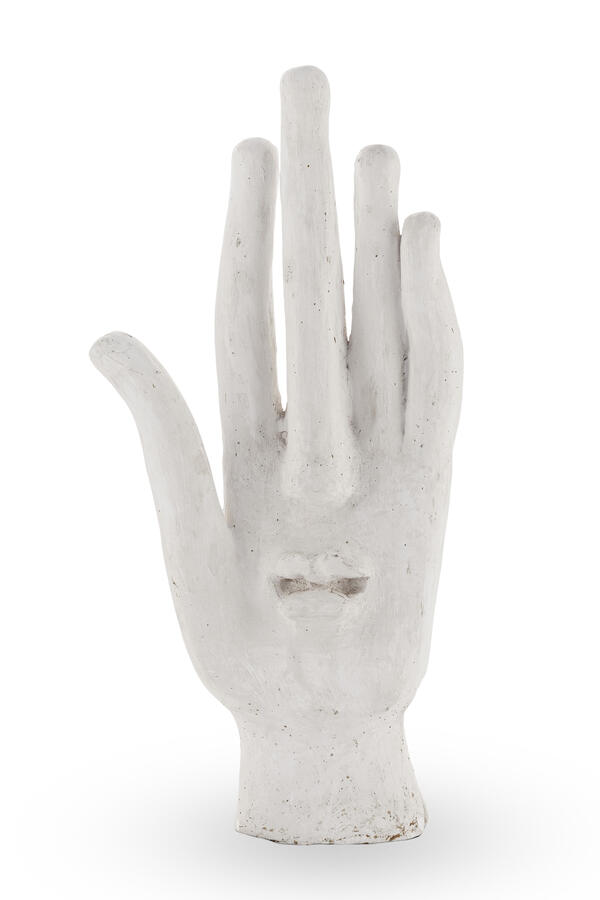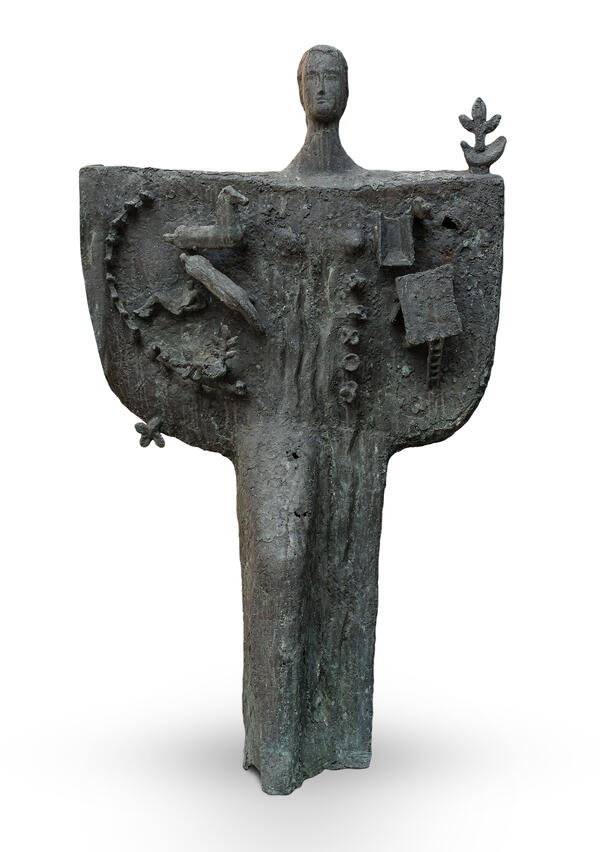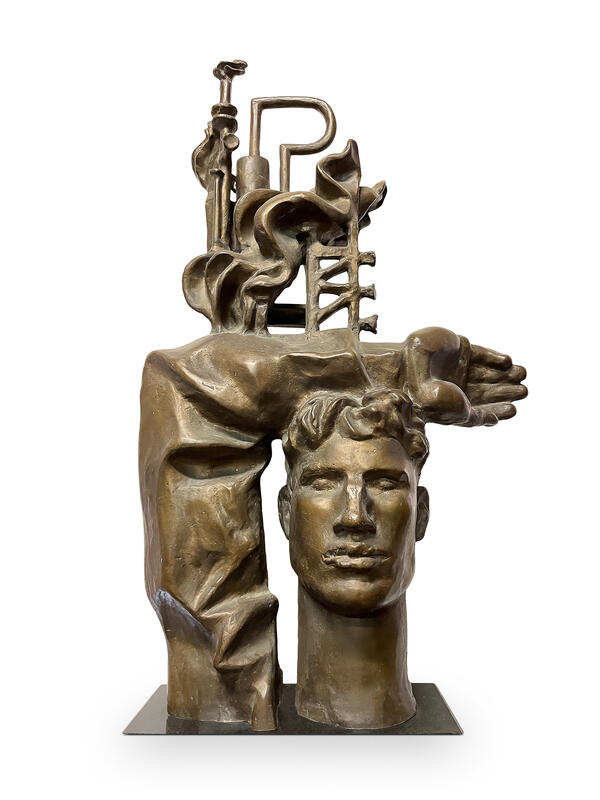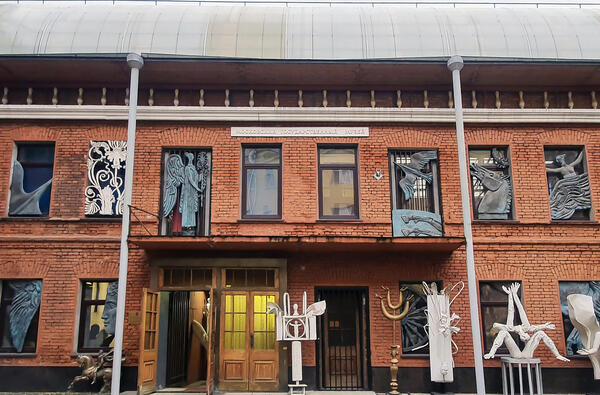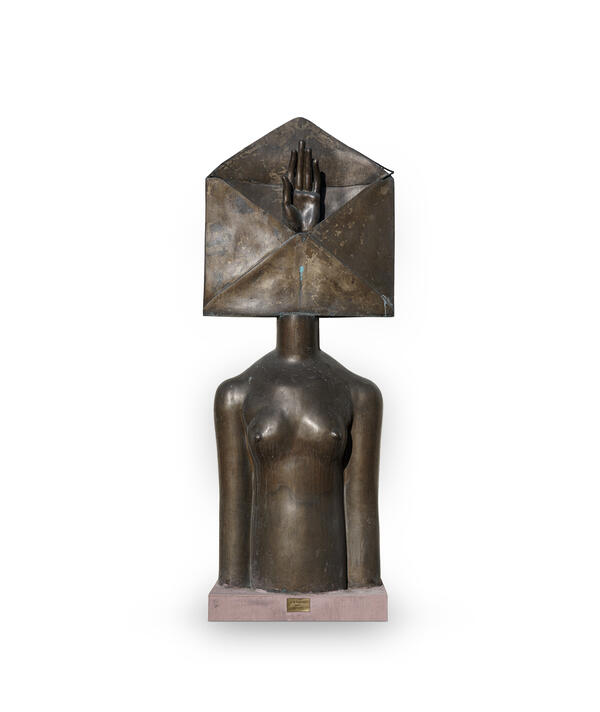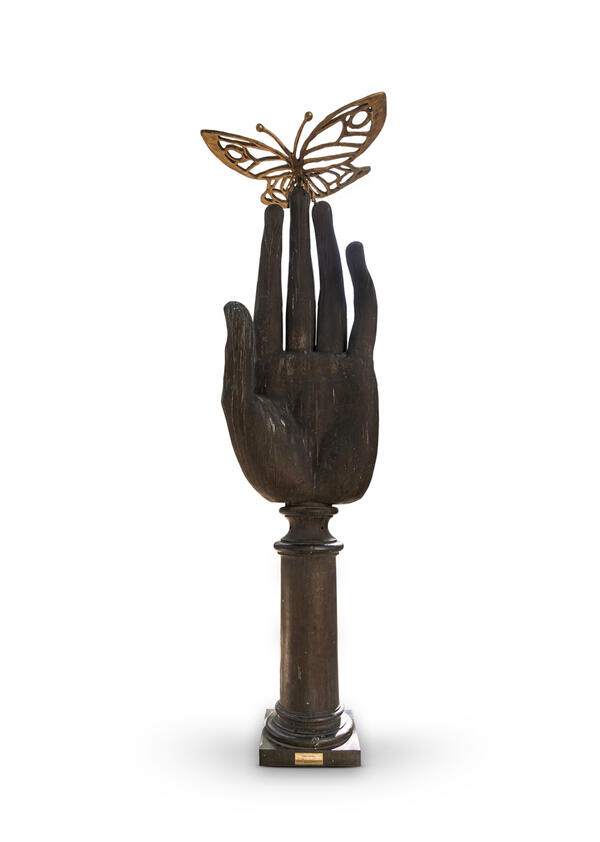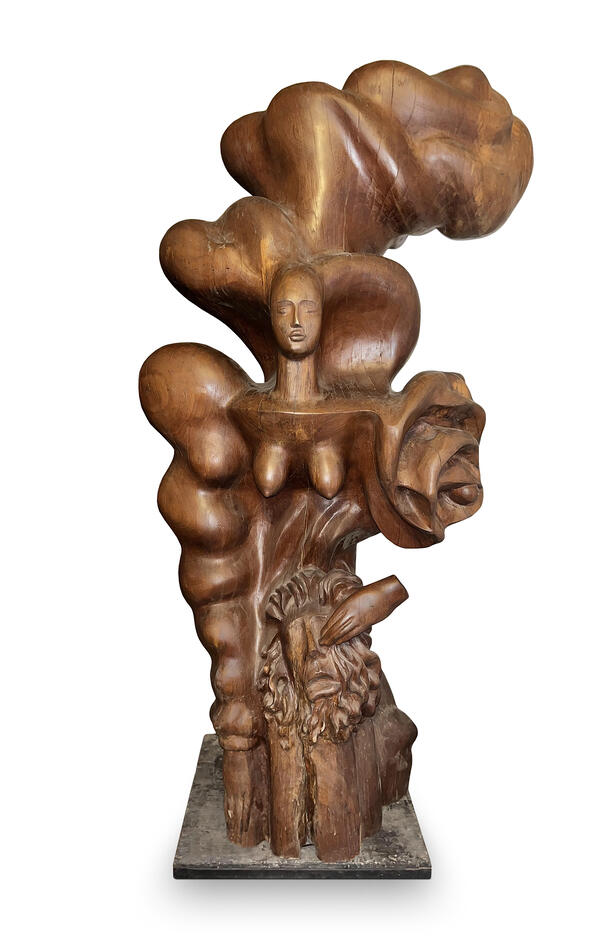The museum’s exhibition features an eye-catching and dynamic sculpture “Love Runs Away”. This vertically arranged minimalist composition creates a sense of a chase, a sprint, a game, and sensibility — everything that is associated with the high feeling of love. This is just the beginning, there has been no touch or declaration of the feeling yet. This might not even come to anything. The characters are not personified and are not portrayed in their entirety because this composition is not about them but about the fleeting moment and the attempt to seize love.
“Love Runs Away” illustrates one of Alexander Burganov’s expressive techniques — the use of fragments that symbolize a whole. With the help of this method, the sculptor is able to interpret the image and emphasize its meaning.
The leg represents movement — a figure that runs away, while the hand symbolizes another figure that seeks to grasp it. The frame is another important element of the composition. It holds the components together, combining them into a single artwork. The frame gives integrity to this fragmented and extraordinarily dynamic composition.
The composition’s dynamics are enhanced by the diagonally placed leg and the drapery that flutters beyond the frame. Like a flying handkerchief or the movement of air, the drapery emphasizes the urgency of movement.
Nothing matters to the sculptor except for a gesture, a moment, and a fleeting movement. Everything else is up to the viewer’s imagination, and therefore the whole idea of the artwork can be deduced from its fragments. Every time, there is a new meaning and a new impression. The only things that are constant are the emptiness of space captured by the frame, the diagonally placed leg, the outstretched hand, and the fluttering drapery.
The composition is displayed on a two-meter-high stand. It is placed high above the ground to emphasize the swift and eternal running that takes place outside of our time and space.
Alexander Burganov’s “Love Runs Away” exemplifies some of the dominant themes in 20th-century art — the use of collage and fragments as part of the artistic method.


